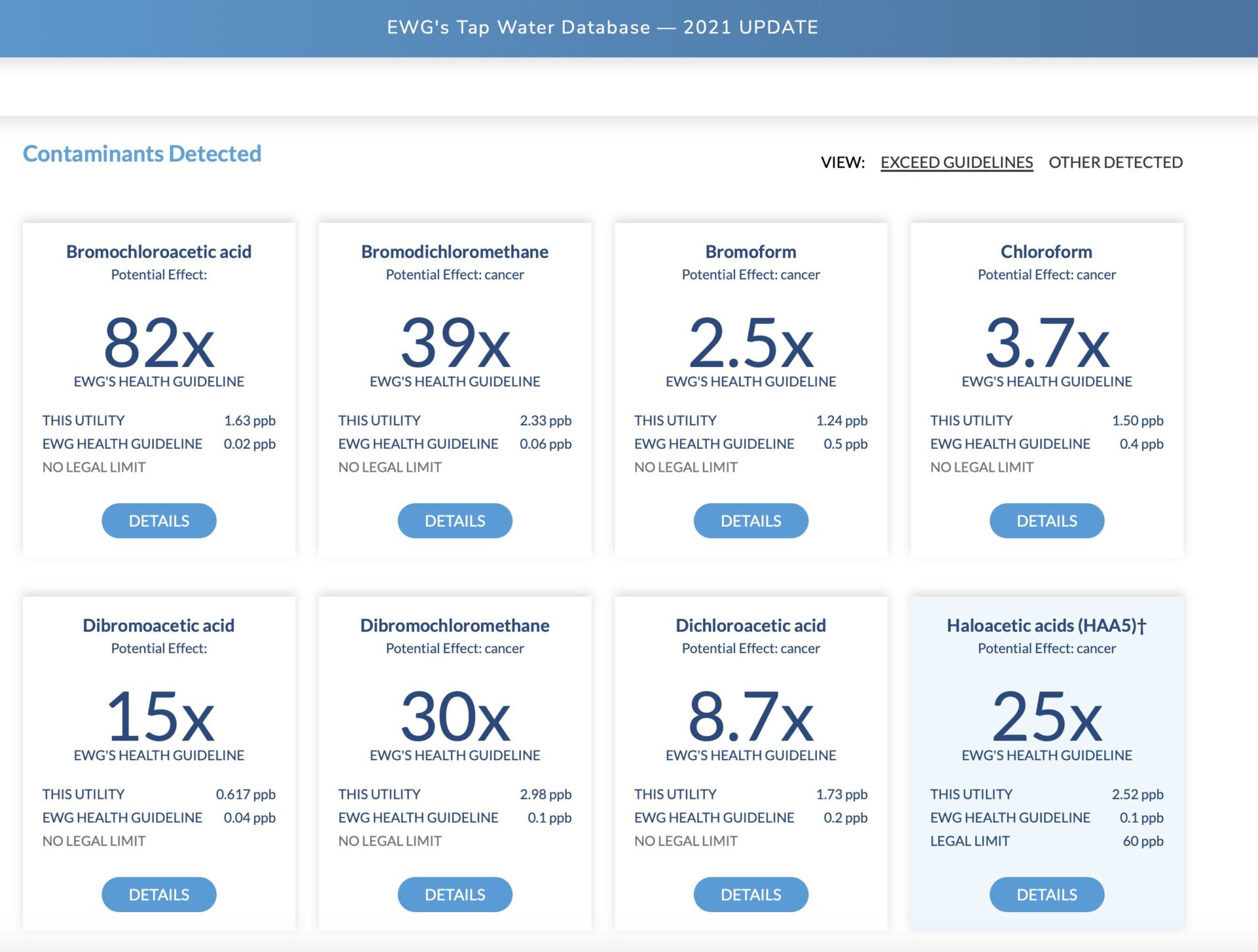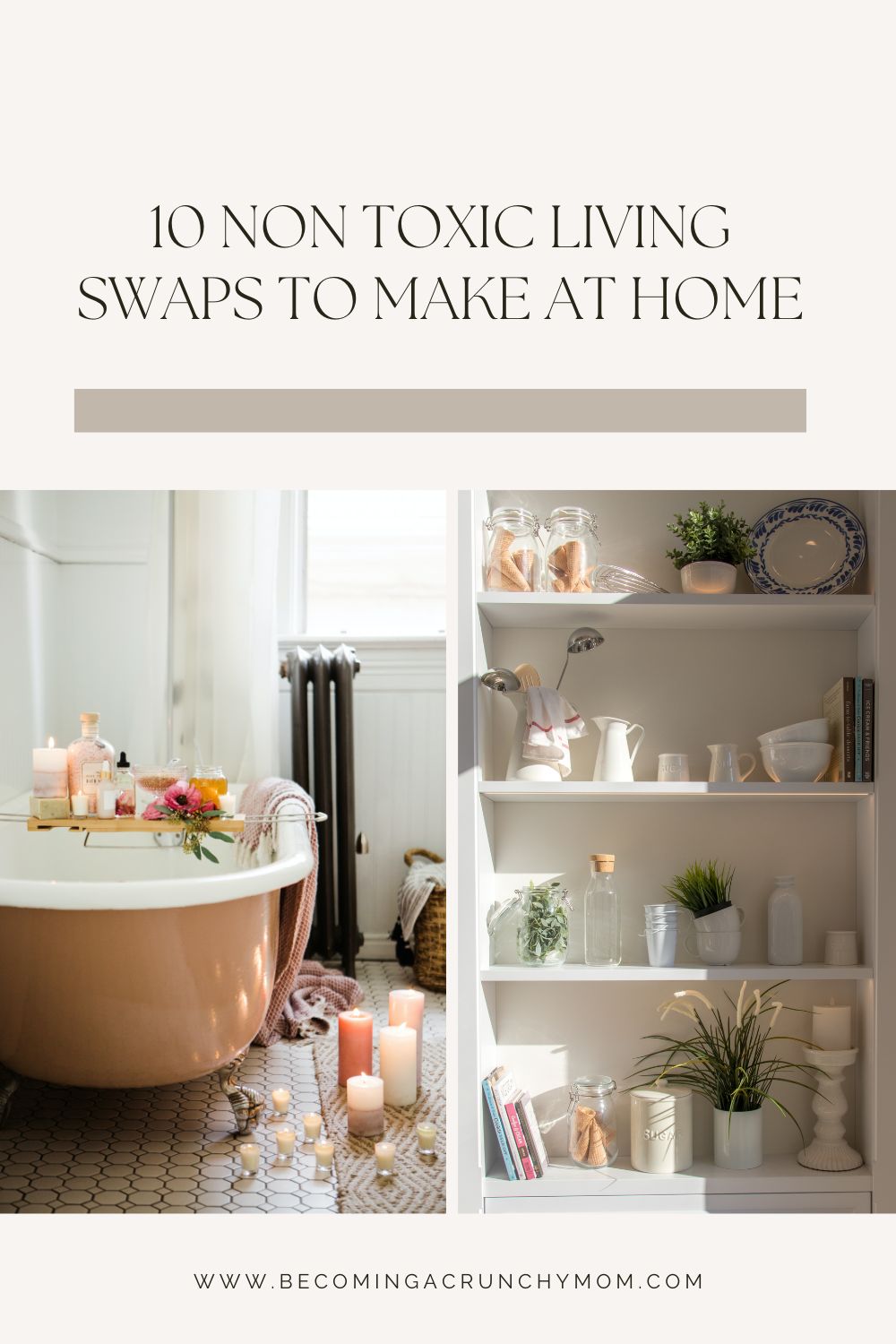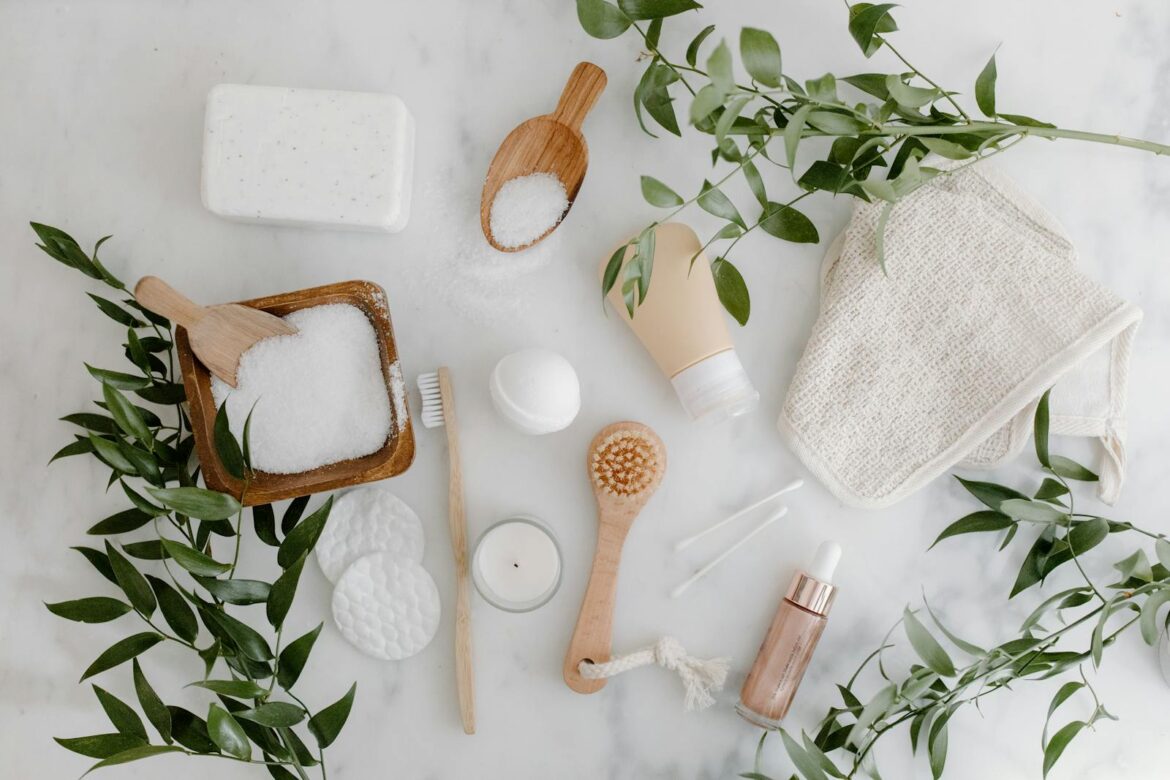In recent years, more people have been exploring ways to embrace a non-toxic, chemical-free lifestyle. While creating a completely toxin-free home might seem challenging, taking steps toward more natural living is definitely achievable.
At first glance, this transition might feel overwhelming and expensive, but it doesn’t have to be. There are plenty of simple, budget-friendly swaps you can start with, alongside larger, more significant changes if you choose to invest in them.
So don’t worry— You don’t need to tackle everything all at once. The journey is entirely personal and should align with your budget, lifestyle, and what feels right for your family. Every small change makes a difference.
To help you get started, I’ve put together a list of practical steps that are easy to follow. Think of this as a journey rather than a destination—progress happens one step at a time. With patience and consistency, you’ll find it much more manageable to embrace this way of living.
Affiliate Disclaimer:
Some of the links on this website are affiliate links, which means I may earn a commission if you click through and make a purchase. This comes at no additional cost to you. I only recommend products and services that I believe will add value to my readers. Thank you for your support!
1. The water in your home.
Water in our homes plays a vital role in our daily lives. We drink it, cook with it, clean with it, and use it for laundry. Additionally, we shower in it, and since the skin is the largest organ of the body, whatever comes into contact with it is highly significant.
Tap water can contain various contaminants, including microorganisms, heavy metals, forever chemicals, pesticides, herbicides, and pharmaceuticals such as hormones (from birth control medications), antibiotics, pain medications, etc. (the list can go on).
Contaminants in your Tap Water
You can discover the water quality in your city, identify the main contaminants, and buy a water filter accordingly. Visit the EWG Tap Water Database by simply entering your ZIP code or city name to get detailed information.
Below is an example of the contaminants found in my city’s tap water, as listed in the database.

Filter the water in your home
Purchase a reliable water filter designed to eliminate the primary contaminants specific to your region.
Reverse osmosis is highly effective, but it also removes essential minerals. To address this, it’s important to replenish those minerals afterward.
Some individuals choose to install filters for the entire household; however, this may not be an option for those living in rentals or apartment complexes. Others are perfectly content with using a simple water pitcher.
There are many options available in the market. Choose what works best for you and fits your circumstances.
Essential locations for installing a water filter at home:
- The water you drink
- The fridge, if you use it for drinking water and making ice.
- The shower or bathtub. The skin is the body’s largest organ and can absorb various substances into the bloodstream. People with skin conditions or sensitivities may find a shower filter beneficial.
- The Washing Machine. If you are trying to avoid chemicals by changing your soap that is great! However, keep in mind that the water may also contain chlorine and other harmful substances that can affect your skin and body.
2. The food you eat
This is a whole topic in itself, so I will make a separate blog post to go deep about it. For now, I will focus on three key swaps you can make to reduce your intake of toxic foods.
Avoid processed and ultra-processed foods.
Ultra-processed foods often contain additives, preservatives, and colorants that are harmful to your health, potentially causing gut microbiota disruption, carcinogenic effects, or even neurotoxicity.
Read the labels, and try cooking from scratch. There is nothing like eating whole natural foods.
Avoid pesticides.
If you enjoy eating fruits and vegetables, it’s important to note that their peels may contain pesticides, as these are often used to ensure produce arrives on shelves in good condition. Fortunately, there are several ways to reduce your exposure to these chemicals.
One option is to buy organic produce whenever possible. Organic farming typically avoids the use of harmful pesticides. Additionally, when you’re unsure about pesticide residue, washing and peeling your fruits and vegetables is a good precaution.
Another way to minimize pesticide exposure is by purchasing directly from farms or farmers’ markets, where you can learn more about their growing practices. If you have the time and space, growing your own fruits and vegetables is also a great alternative.
For more information, check out EWG’s Dirty Dozen and Clean Fifteen lists, which highlight produce with the highest and lowest levels of pesticide residue.
Avoid Heavy metals
Some specific foods may contain heavy metals. For instance, rice tends to have higher levels of arsenic, especially when grown in the United States. Similarly, tuna and certain types of fish can be high in mercury. To minimize exposure, it’s important to conduct thorough research and make informed choices.
Some fish species are less likely to contain mercury, and you can reduce arsenic levels in rice by double rinsing it or sourcing it from California or Asia, as these regions often have lower arsenic concentrations.
3. The medications, vitamins, and supplements you take.
When choosing medications, vitamins, or supplements, prioritize high-quality options with minimal fillers and the purest active ingredients.
For instance, during my pregnancy, I needed supplemental iron. I visited the drugstore and selected one that closely matched my doctor’s recommended dosage and form. However, when I got home and read the label, I was disappointed to see how many fillers it contained.
The fillers include sodium lauryl sulfate as an anionic surfactant and aluminum. SLS is commonly used in shampoos and soaps, and it’s well-documented that aluminum is neurotoxic. Both of these were ingredients I wasn’t willing to consume daily for months during pregnancy.
Instead, I searched online for an iron supplement with citric acid that is gentle on the stomach and contains minimal fillers.
4. Your Kitchen
Materials like ceramic, glass, wood, cast iron, and stainless steel are your best friends in your kitchen.
Avoid plastics, including plates, food containers, and kitchen utensils, especially black plastics. According to a recent CNN article, black plastics are often made from recycled electronics and can contain toxic flame retardants commonly used in cooking utensils.
Glass containers are only slightly more expensive than plastic ones. Even BPA-free plastics are unsafe as they replace BPA with other harmful bisphenols. You don’t need to spend a lot to make the switch—simply reuse jars from your food products.
Plastic is a common material in many coffee makers, including high-end and sophisticated machines. These often contain plastic components (frequently black) that come into contact with hot, acidic water during brewing. This also applies to K-Cups, which are made of plastic combined with aluminum.
Another material to avoid in cooking utensils is aluminum, as it is considered neurotoxic. Refrain from using reusable trays, foil, and pots made from this material.
Avoid Teflon like the plague, as it is one of the most toxic cooking materials. The same applies to most non-stick cooking surfaces, especially if they are scratched. The damaged surface can release harmful chemicals into your food and expose the aluminum base commonly used in these utensils.
This swap features children’s plates and utensils, available in stainless steel, ceramic, wood, or silicone.
Silicone is generally safe. However, I wouldn’t recommend cooking with it, as it may leach certain substances into your food. It is a better choice compared to regular plastic, but it’s best to use silicone spatulas for cold applications.
Heating food in plastic inside the microwave is bad, we know that, but I will advise you to stop using the microwave and instead use a convection oven. The reason for this is that microwave uses nonionizing radiation to heat food. To lower exposition keeping distance from the microwave is advised.

5. Personal care products
Many (if not most) personal care products, including shampoos, soaps, deodorants, lotions, shaving creams, sunscreens, perfumes, skincare, and makeup (especially polish) often contain harmful ingredients.
This also includes baby and feminine products. Just because they are made for these populations does not mean they are safe. We are including diapers, sanitary pads, and tampons in this list. Fortunately, this issue can be addressed with cloth diapers and reusable pads.
The key ingredients to steer clear of in these products include endocrine disruptors, heavy metals, carcinogens, and allergens.
For example, many paraben-free products use phenoxyethanol instead to extend shelf life. However, like parabens, phenoxyethanol is an endocrine disruptor. It should not exceed 1% of the total product formulation and should not be used on babies under 3 years old, especially in the diaper area.
When I started replacing my common personal care products with nontoxic alternatives, I noticed that phenoxyethanol was in almost everything. It made me wonder—how much of this substance are we applying to our bodies every day?
I struggle with hypothyroidism, and at one point, we faced fertility issues because of it. How much did these products contribute to my health problems?
How can you choose a safe product and ensure every ingredient is good or at least not harmful? It may seem like an overwhelming and daunting task.
To start, you can gradually replace them. Once you finish one, switch to a non-toxic alternative. Alternatively, you can replace them all at once, though this approach might be more stressful and costly. Choose the method that suits you best.
I rely on a couple of apps and databases to find the best options. Yuka and INCI Beauty are two great apps you can download on your phone.
With both apps, you can scan products at home or in the store. The app evaluates the product, displays its ingredients, and indicates whether it is beneficial or harmful. Both apps also provide suggestions for healthier alternatives. INCI Beauty additionally offers a website accessible through any browser.
The other database I use is EWG. Their website provides information about products, grades them, lists the ingredients, and assesses their potential harm. While it doesn’t offer suggestions, EWG has its own certification, and you can search for products that carry their certification.
EWG also offers an app, but since it is relatively new, it doesn’t function as effectively as Yuka, in my opinion. (Yuka happens to be my favorite, by the way.)
6. Diapers and femenine products
Disposable diapers can contain toxic products such as plastic polymers, phthalates (endocrine disruptors, volatile organic compounds, bleaching agents, wetness indicators with harmful chemicals, fragrances, pesticides (from cotton and natural fibers), and dyes. These products come into contact with the sensitive areas of our babies.
Disposable wipes may also contain harmful ingredients, so we need to make an informed purchase.
The same occurs with feminine products, which may contain contaminants such as heavy metals, PFAS, VOCs, and artificial fragrances.
There are two alternatives to this predicament.
On one hand, cloth diapers and wipes can be used for babies. It’s best to choose natural fibers such as organic cotton, hemp, or bamboo. For women, reusable cloth pads and medical-grade silicone menstrual cups are excellent options.
The other alternative is to use nontoxic disposable diapers, wipes, and feminine products. As with anything, reading the labels and doing your research is essential.
7. Your laundry routine
One of the most problematic products in our homes is laundry detergent and dryer sheets. These items are used to clean clothes, towels, and bed sheets—fabrics that constantly contact our skin 24/7.
I carefully examined the ingredients of numerous store-bought laundry detergents. Surprisingly, Arm & Hammer’s sensitive skin formula turned out to be less favorable than their regular version.
I also reviewed the non-toxic options, and even those contained at least one ingredient I didn’t prefer. For instance, Ecos includes phenoxyethanol, which, as I mentioned earlier, is an endocrine disruptor.
The top choices I’ve come across are Molly’s Suds and Branch Basics. Another favorite of mine is Azure Standard’s Organic Castile Soap, which I absolutely love.
Consider using wool dryer balls as an alternative to dryer sheets, and you can enhance them with a few drops of essential oils for a fresh scent. Additionally, brands like Molly’s Suds and Whole365 offer non-toxic dryer sheet options.
Besides reading the labels, you can check the EWG database and certifications to find the ideal product for you.
8. Your Cleaning products
Cleaning products are among the most toxic items you can find. However, if you’re looking for a non-toxic and cost-effective alternative, you can always rely on water, lemon, baking soda, and white vinegar to create your own DIY multipurpose cleaners.
Many harmful cleaning products consist of floor and carpet cleaners, all-purpose cleaners, glass cleaners, bathroom cleaners, dishwashing liquids, and more.
The best database I’ve found for this purpose is EWG. It also functions as a certification, allowing you to choose their certified products for safer cleaning. Be sure to read the labels and select what works best for you.
There are also safer brands like “Naturally It’s Clean.” Azure Standard offers safer alternatives under their “Azure Clean” line for healthier cleaning. However, both still contain some ingredients I personally don’t agree with. That said, they are a significant improvement compared to mainstream options.
I love Azure Organic Castile Soap as a multipurpose cleaner, dish soap, and even laundry detergent. While Branch Basics is equally versatile, I find that Azure Castile Soap works best for me.
9. Electronics
When it comes to electronics, there are a few adjustments you can make.
The modem in your home operates using microwaves. To minimize exposure, some people choose to wire their entire home. Personally, I turn off my modem at night to help everyone sleep better. I also disable the Wi-Fi and Bluetooth on my phone.
You can charge your phone away from you and use the speaker or wired headphones when calling. Brain cancer linked to cell phone use is a genuine concern. A study revealed that talking on the phone for over 1,000 hours significantly increases the risk of developing tumors.
Blue light can negatively impact our health, disrupting the circadian rhythm and posing other risks. To minimize these effects, consider wearing blue light-blocking glasses when using computers, phones, or other electronic devices to improve sleep quality.
LED lights also emit blue light, so opting for warm-toned lighting is a healthier choice. Additionally, reducing screen usage can be beneficial.
The best type of lighting for your home is incandescent lighting. Although these were banned from sale in the USA, there are some exceptions, such as specialty bulbs like oven lights. These can still be purchased and used in standard lamps.
The only downside is that they are 40 watts, so they won’t fully illuminate an entire room but work well with lamps and fixtures. They also create a super cozy atmosphere. I use them in my bedrooms to promote better rest.
There are some LED appliance bulbs available, but they are designed for refrigerators and cannot be used in ovens. Currently, there are no replacements for oven-specific bulbs. Some specialty bulbs, like certain Christmas lights, might offer creative alternatives, so feel free to use your imagination to make it work for your needs.
10. The rest of your home
There are several ways to improve your home environment. For instance, consider removing asbestos or lead paint if you live in an older house.
Make it a habit to change your AC unit filter regularly, and you may also want to invest in an air purifier for cleaner indoor air.
Take a cue from European households by leaving your shoes at the door and opting for socks or indoor footwear. This practice helps reduce the amount of dirt and toxins brought into your home.
Consider purchasing natural fiber clothes made from organic materials for both clothing and bedsheets.
While it might be a bit more expensive, you could also explore organic mattresses crafted from organic cotton, wool, and latex. These options help reduce exposure to fumes often associated with regular mattresses.
There are several non-toxic furniture brands available, but if you’re looking to save money, opting for plain wood furniture can be a cost-effective alternative.
Additionally, ensure your home is free of leaks, as hidden moisture can lead to toxic mold growth. Mold exposure can make many people seriously ill.
Conclusion:
Living a non-toxic lifestyle is not a goal or destination but rather an ongoing journey. Taking it step by step is perfectly fine and can make the process feel less overwhelming. Gradual changes can positively impact your life and the well-being of your loved ones.
This lifestyle doesn’t need to be perfect or overly strict. You are in charge of your home, and you decide where to begin. It could be with the most pressing issue, the simplest adjustment, or the changes that feel most meaningful to you.
At the end of the day, prioritizing our health not only saves money in the long run but is always a worthwhile investment.

